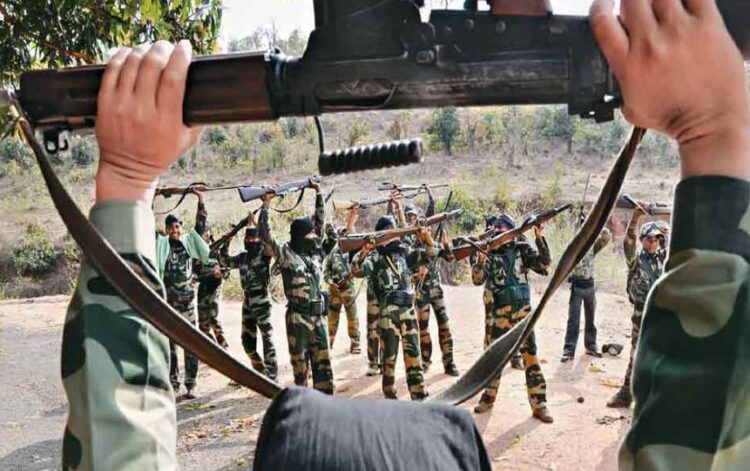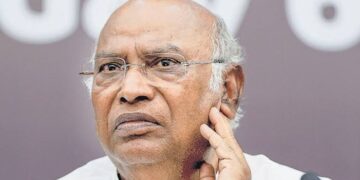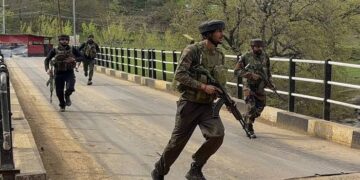Maoist strategist and top leader Basavaraju recently important to death in an encounter with central forces.
May 21 was a day of special achievement in the campaign of anti -Maoism central forces in Chhattisgarh. That is why the news of 70 -year -old Maoist leader Nannavla Keshav Rao alias Basavraju, who was killed in an encounter that day, was posted on X by Union Home Minister Amit Shah himself. He wrote, “Today, in an operation in Narayanpur, Chhattisgarh, our security forces have killed 27 dreaded Maoists, including CPI-Maoist general secretary, top leader and Nambala Keshav Rao alias Basavaraju, the spine of Naxal movement. I appreciate our brave security forces and agencies for this major success for the first time in three decades of the country’s fight against Naxalism. During this time 54 Maoists have been allegedly arrested and 84 have surrendered. Shah claims, “The Modi government is determined to end Naxalism before 31 March 2026.”
So, is Basavaraju’s death really important in dealing with the Maoist challenge in the red corridor of Chhattisgarh, Maharashtra, Telangana, Jharkhand and Odisha? Of course, this is not a small event. But 70 -year -old Basavaraju was now old and the strength of the struggle had decreased. Basavaraju of Jiyannapeta village in Srikakulam district became the general secretary of CPI Maoist from November 2018. For the last 35 years, a reward of about Rs 1.5 crore was declared on Basavaraju, a member of the Central Committee of the Maoist organization. Basavaraju, who always holds AK 47 rifle with him, had a lot of dominance in the areas of Chhattisgarh, Andhra Pradesh, Telangana and Maharashtra. For 24 years, the CPI joined the Maoist after studying engineering from Basavaraju Warangal as a polit bureau member. Basavaraju had mastered the guerrilla war and dodging security forces. Most of the time in the organization, the armed command was operated and known for aggressive attacks. It is said that Basavaraju had created a plan for the Jhiram Valley murder case on 25 May 2013, in which Congress leader Vidyacharan Shukla, Chhattisgarh Congress President Nand Kumar Patel, Congress leader Mahendra Karma, etc. were killed. A total of 33 people were killed and brutally murdered in it.
Security forces action against Maoists
In the sixties and seventies, the agitation of fierce extremism emerged from Naxalwadi in West Bengal was reduced to the tribal red corridor in the last three-four decades. The fight of the tribals broadly became his weapon. Due to their violent actions, the tribal -dominated area came to be called red corridor. It has extended to Jharkhand, West Bengal, Odisha, Andhra Pradesh, Telangana, Chhattisgarh, Maharashtra, Madhya Pradesh. These areas have been deprived of the mainstream of development.
Therefore, the red corridor from Pashupati (Nepal) to Tirupati became the biggest challenge for law and order. There was a time that a large part of West Bengal, Jharkhand, Bihar, Odisha, Chhattisgarh, Madhya Pradesh, Andhra Pradesh and Telangana was badly affected.
In fact, the history of fiery Left is associated with the communist movement in the country. The Communist Party of India was established on 26 December 1925 in Kanpur. The Communist Party gained fame and power from the peasant movements of Tebhaga 1946 (Bengal) and Telangana 1945 (Andhra Pradesh). After independence, there were differences in the Communist Party about the nature of the Indian state. After independence, the problem arose that the Communist Party would follow the democratic constitutional route or it would adopt the alleged revolutionary path of violence. But the Communist Party of India chose the path of constitutional democracy, which discouraged and misguided the Communist Party of the Communist Party. In 1962, there was a confrontation at the Communist Party of China’s invasion of India. Furious factions were supporters of China’s line. Therefore, armed communist factions in India continued to connect themselves with Mao and China. The CPI was partitioned in 1964 and the CPI -M was born.
Then, the CPI (Marxist Leninist) was formed by the CPI (Marxist Leninist) with the perception of class struggle. A police officer died in a violent attack on a police team who arrived in Naxalbari village in West Bengal on 24 May 1967. The next day, 11 people died from a bullet fired at the police meeting of the police. The then Chief Minister of West Bengal Siddharth Shankar Rai crushed the movement.
But in 1969, his colleagues, including Charu Majumdar and Kanu Sanyal, separated from the CPI-M and formed the Communist Party of India (Marxist-Leninist). The strategy of cleaning the class enemies of Charu Majumdar caused a lot of bloodshed. After the formation of Bangladesh, Naxalism was spreading the attention of the central government. On July 16, 1972, Charu Majumdar was caught from his underground hideout in Kolkata and died in police custody on 28 July. Later, CPI-ML was divided into various groups. Gradually, these about 40 small groups started working in different areas. On 22 April 1980, Kondapalli Sitaramaiah founded the People’s War Group (PGW).
The incidents of leftist militant violence were at their highest level with 1936 in 2010, declining to 374 in 2024. They decreased by about 81 percent. The number of total deaths (common people and security forces) during this period has also come down by 85 percent to 150 in 2010 to 150 in 2010.
The government has adopted a multi -faceted strategy to deal with Maoist violence. The central government has committed to completely eliminate Naxalism by 31 March 2026. The government has started working on a policy of establishing the rule of law with zero tolerance policy and stopping illegal violent activities.






